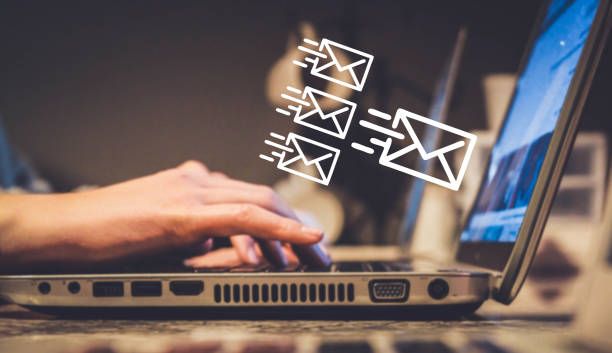In the fast-paced world of email communication, managing bounced emails is crucial for maintaining a high level of deliverability and ensuring the success of your email marketing campaigns. A bounced email occurs when a message is undeliverable to the intended recipient's mailbox. It can happen for various reasons, including invalid email addresses, full mailboxes, or temporary server issues. In this comprehensive guide, we will delve into the best practices and strategies for effective email bounce handling to help you overcome this common challenge and maximize the impact of your email campaigns.
Understanding Email Bounce Types

There are two primary types of email bounces: hard bounces and soft bounces. Distinguishing between them is essential for diagnosing and resolving delivery issues effectively.
- Hard Bounces: A hard bounce is a permanent failure to deliver an email. It occurs when the recipient's email address is invalid, non-existent, or blocked permanently. Hard bounces often indicate issues with the recipient's email address, such as typos, deactivated accounts, or domain name errors. It is crucial to remove hard bounced email addresses from your mailing list promptly to maintain a clean and engaged subscriber base.
- Soft Bounces: Unlike hard bounces, soft bounces are temporary delivery failures. They occur when the email cannot be delivered temporarily, usually due to issues like a full mailbox, server downtime, or a recipient's email server being temporarily unavailable. Soft bounces do not require immediate action, as the email may be delivered successfully upon subsequent attempts. However, if soft bounces persist over a prolonged period, it may be necessary to investigate the underlying issue.

Best Practices for Handling Email Bounces

Now that we have a clear understanding of email bounce types, let's explore the best practices and strategies to effectively handle them:
- Maintain a Clean Email List: Regularly clean your email list by removing hard bounced email addresses. Use an email verification service or implement double opt-in processes during subscription to minimize the chances of invalid or mistyped addresses entering your database. A clean list ensures better deliverability and engagement rates.
- Monitor Bounce Rates: Track your bounce rates regularly to identify any sudden increases or persistent issues. A sudden surge in bounce rates may indicate problems with your email infrastructure or sender reputation. Monitoring bounce rates allows you to take proactive measures promptly, minimizing the impact on your campaigns' success.
- Analyze Bounce Reports: Email service providers (ESPs) often provide detailed bounce reports that categorize bounce types and provide specific reasons for delivery failures. Analyzing these reports helps you identify patterns, understand the underlying causes, and take targeted actions to resolve issues.
- Segment Your Audience: Segmenting your email list based on engagement levels and bounce history allows you to tailor your communication strategies. By targeting engaged subscribers and suppressing non-responsive or high-bounce segments, you can improve overall deliverability and engagement metrics.
- Implement Feedback Loops: Feedback loops enable you to receive notifications from ISPs when recipients mark your emails as spam or complain about your messages. By promptly removing these recipients from your list, you can prevent further damage to your sender reputation and maintain a positive relationship with ISPs.
- Utilize Email Authentication: Implement email authentication protocols like SPF (Sender Policy Framework), DKIM (DomainKeys Identified Mail), and DMARC (Domain-based Message Authentication, Reporting, and Conformance) to authenticate your emails and prevent spoofing and phishing attempts. Proper authentication helps establish trust with ISPs and reduces the likelihood of bounces and spam folder placements.
- Optimize Email Content and Design: Poorly designed emails or content that triggers spam filters can contribute to higher bounce rates. Ensure your emails are visually appealing, mobile-responsive, and contain valuable content that resonates with your audience. Regularly test your emails for deliverability and spam scores using email testing tools.
- Continuously Improve Sender Reputation: A good sender reputation is critical for email deliverability. Maintain healthy email practices, avoid sending unsolicited emails, and closely monitor and respond to recipient complaints. ISPs consider sender reputation when deciding whether to deliver your emails to the inbox or divert them to the spam folder.
Commonly Asked Questions
How can I reduce bounce rates?
To reduce bounce rates, focus on maintaining a clean email list, implementing email verification processes, and regularly monitoring and analyzing bounce reports. By segmenting your audience, targeting engaged subscribers, and utilizing email authentication protocols, you can significantly improve deliverability rates.
What is the impact of bounce rates on email marketing?
High bounce rates can have detrimental effects on your email marketing campaigns. ISPs may flag senders with consistently high bounce rates as spammers, impacting your sender reputation and deliverability. Additionally, bouncing emails waste valuable resources and hinder your ability to reach your target audience effectively.
How can I handle hard bounces?
Handle hard bounces by promptly removing the corresponding email addresses from your mailing list. Implementing double opt-in processes during subscription and using email verification services can help prevent hard bounces. Regularly cleaning your list and maintaining a healthy sender reputation are crucial to successful email delivery.
Should I be concerned about soft bounces?
While soft bounces are generally temporary and do not require immediate action, it is essential to monitor them closely. If soft bounces persist over an extended period, investigate the underlying causes, such as server issues or mailbox limitations. Addressing recurring soft bounces ensures optimal email deliverability.
Conclusion
Effective email bounce handling is essential for maintaining a successful email marketing strategy. By understanding bounce types, implementing best practices, and continuously monitoring and optimizing your email campaigns, you can reduce bounce rates, enhance deliverability, and maximize engagement with your audience. Stay proactive, adapt to changing email landscape dynamics, and build strong relationships with your subscribers and ISPs for long-term email marketing success.

